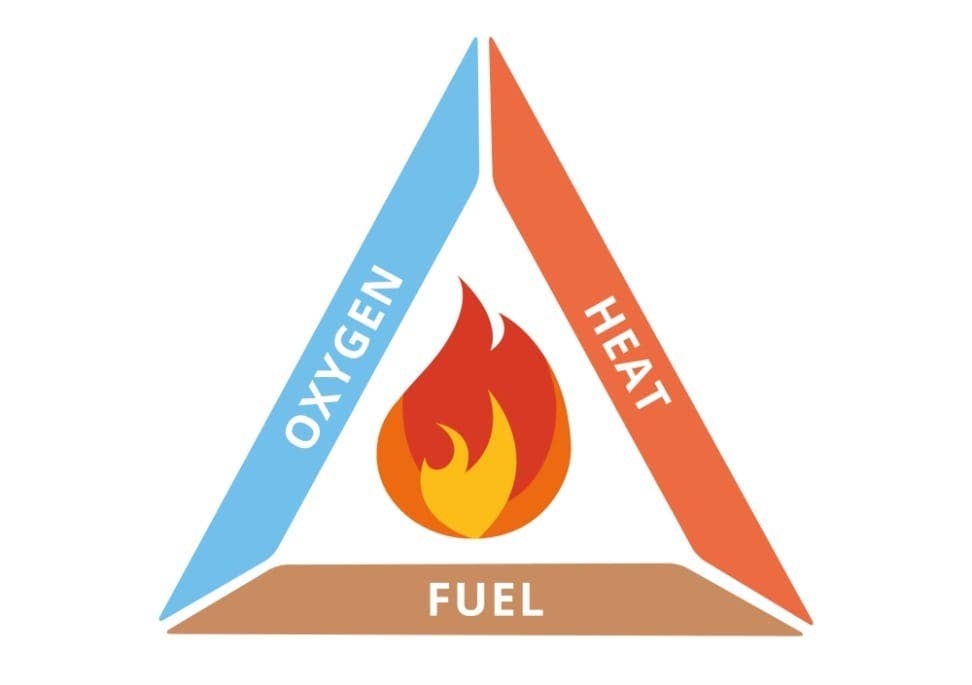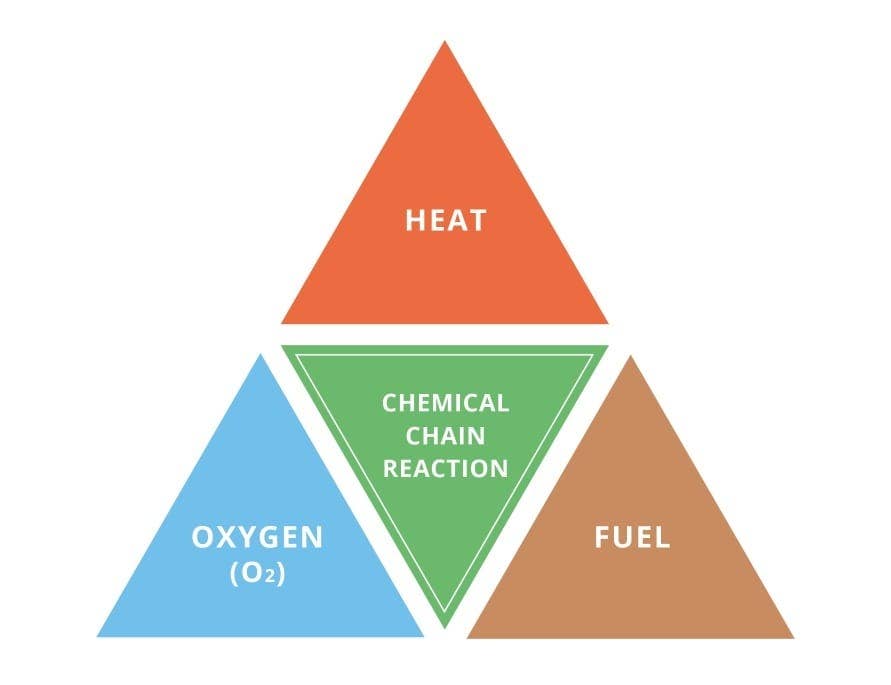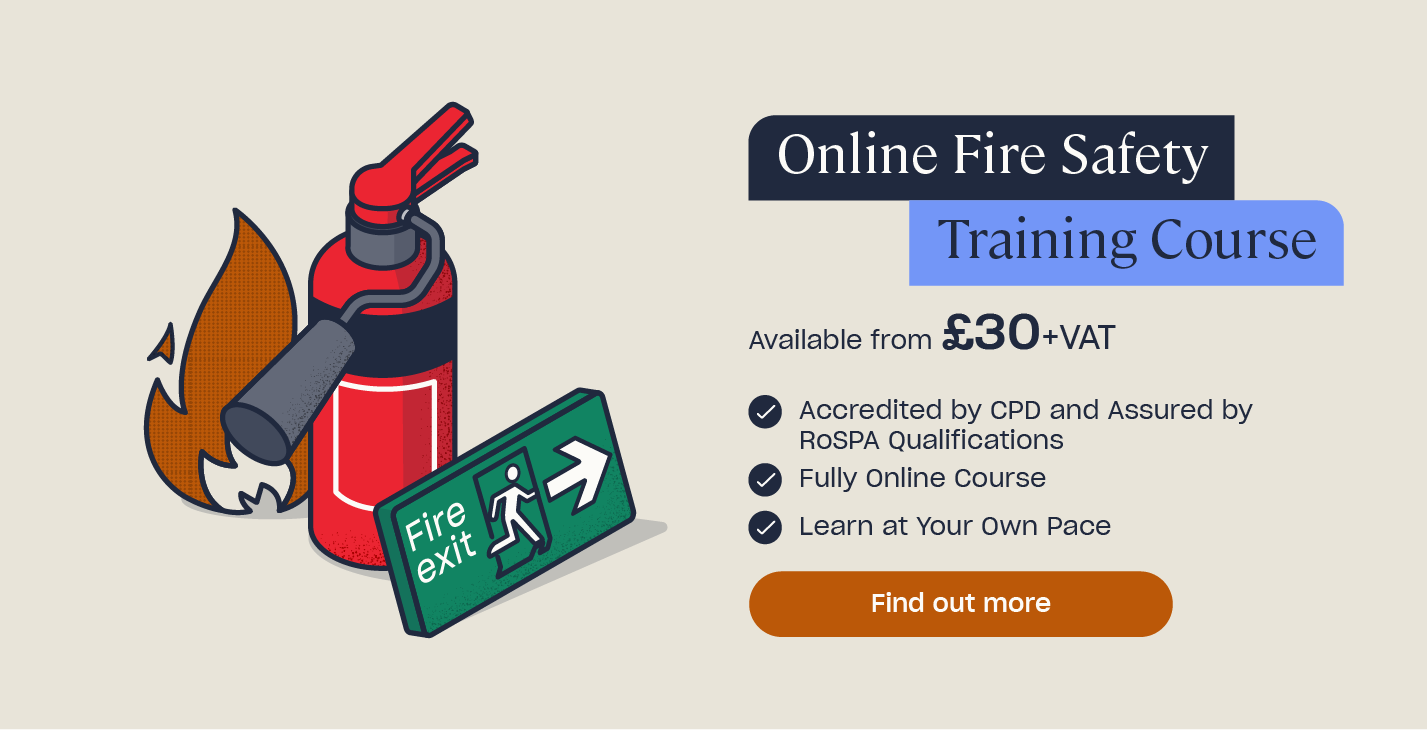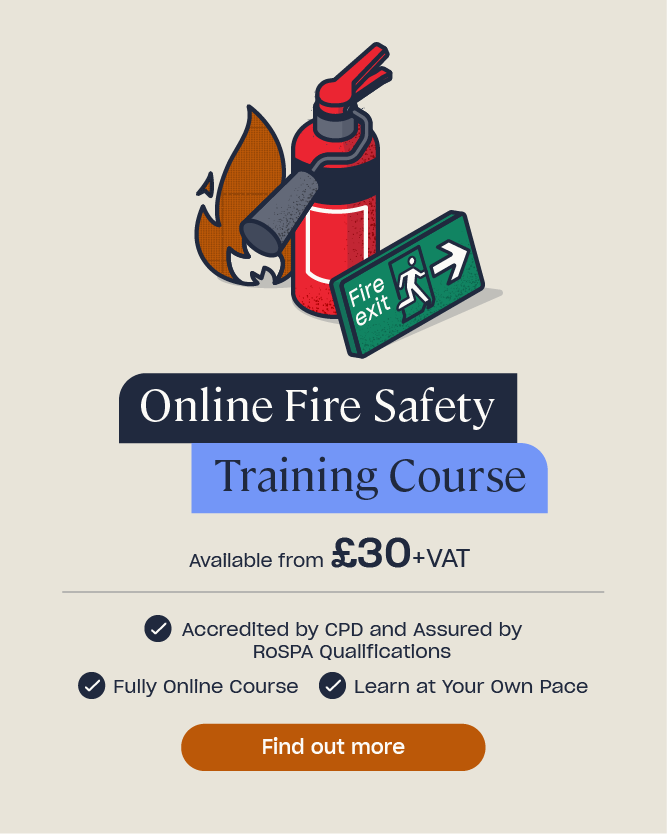Information about the Fire Triangle & Tetrahedron
The Fire Triangle
The Fire Triangle is the diagram used most often to explain the components needed to start a fire. It’s used in schools to teach children about fire safety and it also is a useful tool for teaching employees about basic fire prevention.
The Fire Triangle looks like this:

The Fire Tetrahedron
Researchers say that the fire triangle diagram should be adapted to help people get to grips with how fires really start because the Fire Triangle misses out a vital part of the fire starting process.
Experts recommend that adding the fourth essential element of a ‘chemical chain reaction’ will create a more accurate representation of the combustion process (this is the chemical process where fuel reacts rapidly with a source of oxygen to create fire i.e. burning). Hence the birth of the Fire Tetrahedron.
This is what the Fire Tetrahedron looks like:

The original Fire Triangle showed oxygen, heat and fuel as the three components of fire. This fourth element (the chemical chain reaction) has been added to demonstrate how these three sources (oxygen, heat and fuel) interact to create fire. It’s this chain reaction process that creates the flames – the key to stopping fires is to stop this chain reaction from occurring.
Do Fire Wardens Need To Know?
In short, yes. The idea behind the fire triangle/tetrahedron is that if you know how fires begin, it’s easier to grasp how to prevent and tackle fires.
The tetrahedron diagram works better than the triangle because it makes it clear how a fire extinguisher works.
Extinguishers work by creating a barrier between the fires components – fuel, heat and air – thus preventing the chemical chain reaction from happening.
To disrupt the elements that form the Fire Tetrahedron and thus put out the fire, you need to do one or more of these four things:
- Remove fuel sources. This can be a preventative measure i.e. making sure potential fire hazards are stored safely or if a fire has started you can use water to disperse the fuel sources and to cool them.
- Cool the burning materials with water.
- Exclude oxygen. For example, with a fire blanket to prevent oxygen from reaching the process.
- Break the chemical reaction. It is the chain reaction that keeps a fire going.
Need a Training Course?
Our Fire Safety Training explains legal responsibilities, the common causes of fires, how to prevent them, what fire safety arrangements are necessary, and the importance of following emergency procedures.
Further Resources:
- Fire Safety Duties & Responsibilities of a Fire Warden
- Understanding the Different Types and Uses of Fire Extinguishers
- Fire Extinguisher Quiz
- Fire Safety Signs
- Fire Safety Training







